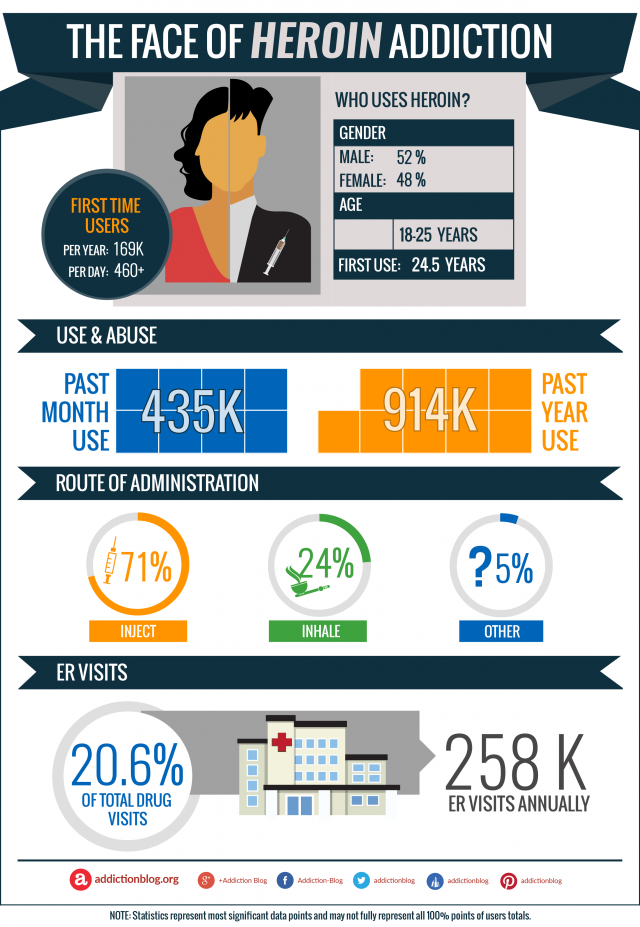Who uses heroin in the U.S.?
The National Survey on Drug Use and Health (NSDUH), in 2012 reported that:
- 669,000 Americans reported using heroin in the past year
- 467, 000 people are heroin dependent (number has doubled from 10 years earlier)
- 156,000 people start heroin use (doubled from ten years earlier)
About 52% of the current population of heroin users are women – says lead study author and Washington University neuropharmacologist Theodore Cicero.

Other statistics indicate that 90% of people who started using heroin in the past decade are white, and most of them are in their late 20s. Out of all the survey respondents who had taken heroin, 75% of them did so while living in small cities or non-urban areas. They also tend to be within the age bracket from 18-25 years and come from households with incomes below $20,000.
Geographic trends of heroin use
Heroin use no longer predominates solely in urban areas. Several suburban and rural communities report increasing amounts of heroin seized by officials as well as increasing numbers of overdose deaths due to heroin use. Heroin use is also on the rise in many urban areas among young adults aged 18-25.
The new population of users is diverse and there is no longer a typical heroin user. Whereas in the 1970s and 1980s heroin use was largely confined to urban populations, heroin use in the 1990s and 2000s spread to users in suburban and rural areas, more affluent users, younger users, and users of a wider range of races, according to academic research.
Heroin use dangers
The increase heroin use, abuse and dependence across most demographic groups parallels the increase in heroin-related overdose deaths. However, the ripple effect and costs from heroin use to society at large is also dramatic and includes:
- Crime and its associated costs (harm to victims, law enforcement, incarceration), Productivity losses
- Medical costs
- Addicts as vectors for HIV and Hepatitis
- The emotional costs to loved ones
If we put all these effects together, it is clear that the problems that stem from heroin use impose an enormous burden on our nation. One important thing is that everyone is more aware that the key to solving America’s heroin epidemic is making treatment available. And, luckily, treatment continues to grow in effectiveness, and is more readily available to addicts who seek help.
Heroin addiction questions
Would you like to ask or add something? Please leave your questions in the comments section at the end. We appreciate your feedback and try to respond personally and promptly to all legitimate inquiries. If you like our infographic, please Share.








Related Posts